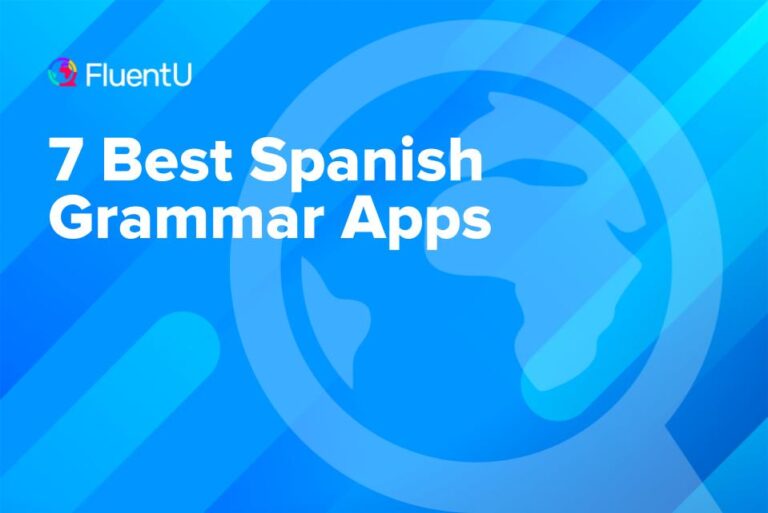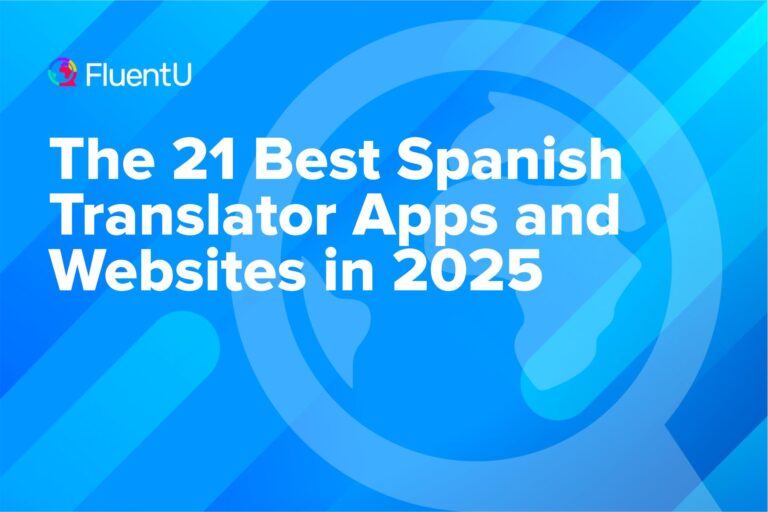Ways to Say “What” in Spanish (With Example Sentences)

Knowing how to say “what” is an essential part of any Spanish learner’s arsenal.
In Spanish, there are multiple ways to say “what,” such as: qué, cómo, lo que and cuál.
In this post, you’ll learn five ways to say “what” in Spanish and see how they are used in context with the help of example sentences.
For a fun twist, the example sentences all feature a well-loved topic: Food!
Download: This blog post is available as a convenient and portable PDF that you can take anywhere. Click here to get a copy. (Download)
1. Qué (as a pronoun)
“What” can be translated as two different versions of the word qué: one as a pronoun and one as an adjective.
When qué is followed by a verb, it functions as a pronoun.
As an interrogative pronoun, qué will always have an accent mark whatever its position in the sentence is. However, you’ll normally find it at the beginning:
¿Qué quiere comer tu novio?
(What does your boyfriend want to eat?)
¿Qué necesitas para preparar la pizza?
(What do you need to prepare the pizza?)
¿Qué has desayunado hoy?
(What have you eaten for breakfast today?)
Even though the last three examples were all direct questions, this will not always be the case. Qué can also appear as an interrogative pronoun in indirect questions:
Necesito saber qué vas a comer.
(I need to know what you’re going to eat.)
Dime qué pediste en el restaurante.
(Tell me what you ordered at the restaurant.)
No sé qué puedo añadirle al batido.
(I don’t know what I can add to the milkshake.)
Finally, you’ll also find the interrogative pronoun qué in reported speech sentences. Although there are lots of reporting verbs, the most frequently used in front of qué are preguntar (to ask), preguntarse (to wonder), querer saber (to want to know) and necesitar saber (to need to know):
Me preguntó qué estaba comiendo.
(He asked me what I was eating.)
Se preguntaba qué podía usar en lugar de azúcar.
(She wondered what she could use instead of sugar.)
Mi madre quería saber qué había cenado.
(My mom wanted to know what I had for dinner.)
Necesitaba saber qué iba a cocinar.
(She needed to know what I was going to cook.)
To learn all the uses of que in Spanish, I recommend watching this video:
2. Qué (as an adjective)
The second meaning of “what” in Spanish (qué) may seem like it’s slightly different from the first one.
This time, qué functions as an adjective in the sentence. For that reason, it will not be followed by a verb, but by a noun.
If you’re not really into learning grammar and just need to learn conversational Spanish, you can ignore this fact and just remember that “what” is translated as qué most of the time, but I do believe it’s a good thing to know these little interesting facts about the language you’re studying.
Whatever your situation may be, just know that qué can also be followed by nouns:
¿Qué fruta es tu favorita?
(What’s your favorite fruit?)
¿Qué desayuno es ese?
(What kind of breakfast is that?)
¿Qué sopa es mejor para el dolor de estómago?
(What soup is the best for a stomachache?)
As with the previous qué, adjectival qué can also appear in indirect questions and indirect speech:
Necesitamos saber qué fruta es tu favorita.
(We need to know what your favorite fruit is.)
Me preguntó qué desayuno era ese.
(She asked me what kind of breakfast it was.)
No sabía qué sopa era la mejor para el dolor de estómago.
(He didn’t know what the best soup for a stomachache was.)
Finally, you can also find the adjectival qué as an exclamatory adjective. Remember to add the opening exclamation mark (¡) every time you use the closing one:
¡Qué alegría comer pizza!
(I’m so happy to eat pizza! [Lit.: What happiness to eat pizza!])
¡Qué cosas tan deliciosas cocinas!
(You cook such delicious food! [Lit.: What things so delicious you cook!])
¡Qué tomate más delicioso!
(What a delicious tomato! [Lit.: What tomato more/so delicious!])
3. Cómo
Cómo means “what” only in very specific situations, so pay attention now.
Use cómo with the meaning of “what” when you’re expressing your incredulity and/or annoyance for what has happened or what someone has said.
¡Cómo! ¡Eso no puede ser verdad! ¡Él no sabe cocinar!
(What! That can’t be true! He doesn’t know how to cook!)
¿Cómo? ¡No me lo puedo creer! ¿Ana ha hecho el pastel?
(What? I can’t believe it! Ana has made the cake?)
In every other case, cómo will mean “how.” Here are some examples:
¿Cómo se usan los palillos?
(How are chopsticks used?)
¿Cómo cocinaste el pollo?
(How did you cook the chicken?)
4. Lo que
If we translate lo que literally, its meaning would be “that which.”
However, this makes the English translation sound a little bit awkward:
Lo que más me gusta es comer pasta.
(That which I like the most is eating pasta.)
No sé lo que vamos a almorzar.
(I don’t know that which we will have for lunch.)
Come lo que quieras.
(Eat that which you want.)
But if we substitute “that which” for “what” in these sentences, they sound much more natural. Have a look:
Lo que más me gusta es comer pasta.
(What I like the most is eating pasta.)
No sé lo que vamos a almorzar.
(I don’t know what we’ll have for lunch.)
Come lo que quieras.
(Eat what you want.)
From this, we can conclude that lo que is better translated as “what.”
Have a look at the examples again and you’ll notice this que does not have an accent mark. It’s very important that you remember this. Lo qué is a vulgarism used instead of the interrogative pronoun qué, and you should definitely avoid it like the plague.
5. Cuál
The last meaning of “what” in Spanish is cuál, which is also an interrogative word that can be a pronoun or an adjective depending on whether it’s followed by a verb or a noun.
You may be wondering then, what is the difference between using qué and cuál? And the answer is simple.
Use cuál when you have to make a choice between two or three things. There can be more than three, but the number will normally be small and limited/defined. Most of the time, you can substitute “what” for “which” and the meaning will be unchanged:
¿Cuál vino prefieres?
(What wine [of the ones I’m showing you] do you prefer?)
¿Cuál pastel te gusta más?
(What cake [of the ones you’re eating] do you like the most?)
On the other hand, opt for qué when the choice is not limited to a few specific items, but to a whole category. You’ll understand this better with a couple of examples:
¿Qué vino prefieres?
(What wine [of all the wines in the wine category existing in the world] do you prefer?)
¿Qué pastel te gusta más?
(What cake [of all the cakes in the cake category existing in the world] do you like the most?)
These rules of thumb should help you remember when to use qué and cuál.
One more thing: You should also use cuál when using “what” as a pronoun—that is, when using it in front of a verb instead of a noun (usually the verb ser [to be]):
¿Cuál es tu comida favorita?
(What is your favorite food?)
No sé cuál es mi verdura favorita. ¡Me gustan todas las verduras!
(I don’t know what my favorite vegetable is. I like all vegetables!)
How to Practice Saying “What” in Spanish
Learning the meaning of “what” in Spanish is an easy task even beginner learners can do. I hope this post has been useful and you’re ready to rock your Spanish qué like there’s no tomorrow.
If you want to see more examples of these terms in use and even learn how to ask your own questions in Spanish, there are lots of apps and resources out there that can help you.
For example, you can practice using qué and cuál on 123TeachMe with this qué vs. cuál quiz, as well as this quiz.
You could also try using an immersive language learning program like FluentU to spot all the different ways that native speakers use “what” in Spanish media clips.
FluentU takes authentic videos—like music videos, movie trailers, news and inspiring talks—and turns them into personalized language learning lessons.
You can try FluentU for free for 2 weeks. Check out the website or download the iOS app or Android app.
P.S. Click here to take advantage of our current sale! (Expires at the end of this month)

Practice Quiz
Try to fill in the gaps with the right term (or terms) to say “what” in the following sentences:
1. ¿______ es tu plato favorito? (What is your favorite dish?)
2. Mi novio no me quería decir ______ iba a cocinar para nuestro aniversario. (My boyfriend didn’t want to tell me what he was going to cook for our anniversary.)
3. ¡______ paella más rica! ¿Me puedes dar la receta? (What a tasty paella! Can you give me the recipe?)
4. ¿______ plato quieres? ¡Toda la comida se ve deliciosa! (What dish do you want? All of the food looks delicious!)
5. ¿Ya sabes ______ vas a pedir en el restaurante esta noche? (Do you already know what you’re going to order at the restaurant tonight?)
6. Te hice un pastel por tu cumpleaños. / ¿______?, ¡¿en serio?! (I made you a cake for your birthday / What, really?!)
Answers:
1. Cuál
2. Qué/Lo que
3. Qué
4. Qué/Cuál
5. Qué/Lo que
6. Cómo
At this rate, you’ll know how to say “what” in Spanish in no time.
¡Qué orgulloso estoy de ti! (I am so proud of you!)
Stay curious and, as always, happy learning!
Download: This blog post is available as a convenient and portable PDF that you can take anywhere. Click here to get a copy. (Download)
And One More Thing…
If you've made it this far that means you probably enjoy learning Spanish with engaging material and will then love FluentU.
Other sites use scripted content. FluentU uses a natural approach that helps you ease into the Spanish language and culture over time. You’ll learn Spanish as it’s actually spoken by real people.
FluentU has a wide variety of videos, as you can see here:

FluentU brings native videos within reach with interactive transcripts. You can tap on any word to look it up instantly. Every definition has examples that have been written to help you understand how the word is used. If you see an interesting word you don’t know, you can add it to a vocab list.

Review a complete interactive transcript under the Dialogue tab, and find words and phrases listed under Vocab.

Learn all the vocabulary in any video with FluentU’s robust learning engine. Swipe left or right to see more examples of the word you’re on.

The best part is that FluentU keeps track of the vocabulary that you’re learning, and gives you extra practice with difficult words. It'll even remind you when it’s time to review what you’ve learned. Every learner has a truly personalized experience, even if they’re learning with the same video.
Start using the FluentU website on your computer or tablet or, better yet, download the FluentU app from the iTunes or Google Play store. Click here to take advantage of our current sale! (Expires at the end of this month.)







